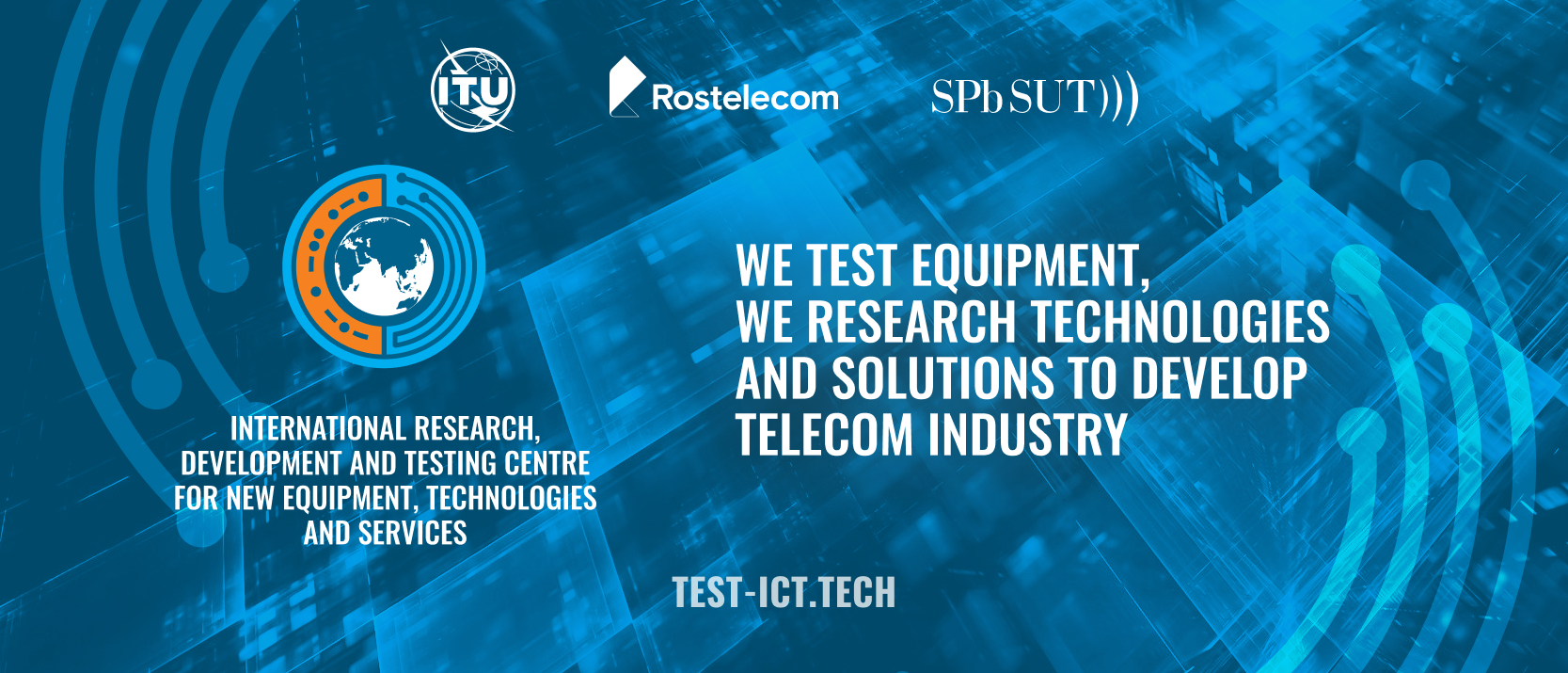12 October 2021
Ruslan Kirichek: “International cooperation is the key to the success of educational projects!”
The International Research and Development Testing Center (IRDTC) was opened in October 2020 at the Bonch-Bruevich Saint Petersburg State University of Telecommunications. It is a joint project of PJSC Rostelecom, St. Petersburg State University of Telecommunications (SPbSUT), and the International Telecommunication Union (ITU).
At the IRDTC laboratory, research is carried out in the most advanced specializations of telecommunications and IT, including promising technologies for communication networks (Network 2030), Internet of Things (IoT), Smart Sustainable Cities (SSC), Distributed Ledger Technologies (DLT), 5G OpenRAN communication networks, and the industrial IoT. This work involves students, teachers, scientists, representatives of industry, and professional associations.
Recently, IRDTC staff created a model network for testing different technologies. The network is built on powerful carrier-class equipment (including servers, routers, and switches) and allows anyone to conduct research based on a simulation of actual network load when testing various network fragments.
Ruslan Kirichek, Doctor of Technical Sciences, Head of the Department of Software Engineering and Computer Engineering, SPbSUT, talks about the laboratory's work.
– What research is carried out in the laboratory?
– We conduct several types of research. For example, we are testing methods for identifying physical and virtual Internet things. Currently, the end devices of the Internet of Things cannot be uniquely identified. Identifiers developed in the 1980s (MAC, IMEI, ID, etc.) are easily replaceable and subject to cloning. Thanks to the new approach proposed by the International Telecommunication Union, we can work differently. The new approach means using digital object architecture to identify physical and virtual Internet things and combat counterfeit ICT equipment. It is this architecture that is deployed in the laboratory and tested on various IoT devices.
Another area of work is testing image transmission based on the LoRa network. Traditionally, long-range energy-efficient networks were designed to transmit telemetry information from metering devices. It was required to transmit a small amount of data 1-2 times a day over a long distance (15-20 km). SPbSUT has developed a method for transmitting images that are pre-compressed and split into many small packets transmitted through the LoRa network. The power consumption of the modules carrying out data transmission and retransmission is recorded. A series of experiments in the laboratory made it possible to determine the parameters of image transmission at which the module's energy consumption is minimal.
We are also testing a fragment of the LoRaWAN network for resistance to deliberate electromagnetic interference. In the course of the experiments, criterion levels will be determined at which the process of data transmission between the terminal devices and the base station is disrupted during remote directional exposure to an electromagnetic field on various network elements.
– How do students participate in the work?
– Students participate in the laboratory. There are always active students who want more than what is given in the classroom at the university. When they learn about the laboratory, they begin to help in running tests. In parallel, they carry out other tasks, such as drawing a diagram of the experiment, describing the stand, preparing a test report, etc.

– Why is it essential to develop joint projects with educational institutions, industry, professional associations, regulators?
– Because students are future engineers who will enter the communication industry and understand the specifics of equipment operation, test methodology, etc. After practicing in the laboratory, they will be able to organize testing of equipment and identify the most suitable for use on the telecom operator's networks.
– Does the laboratory develop cooperation with international partners?
– Yes, it is developing. OJSC "Giprosvyaz" of Belarus has been involved in exploratory research. Negotiations are underway on joint testing with "Uzbektelecom." International cooperation is the key to the success of educational projects!
– What has been done in the laboratory in a year - since its creation in autumn 2020?
– A lot has been done since the establishment of the laboratory. The laboratory at SPbSUT was connected with the Rostelecom laboratory on the Sinopskaya embankment using DWDM equipment from the T8 company, which made it possible to organize a communication channel at speeds of 400 Gb/ s. There were two phases of testing the new UDTP transport protocol. A new energy-efficient long-range network, SNBWAN, is being developed based on the laboratory and jointly with KB Mars LLC. We have recently hosted the events of the International Telecommunication Union and the Regional Commonwealth in the field of communications.
|